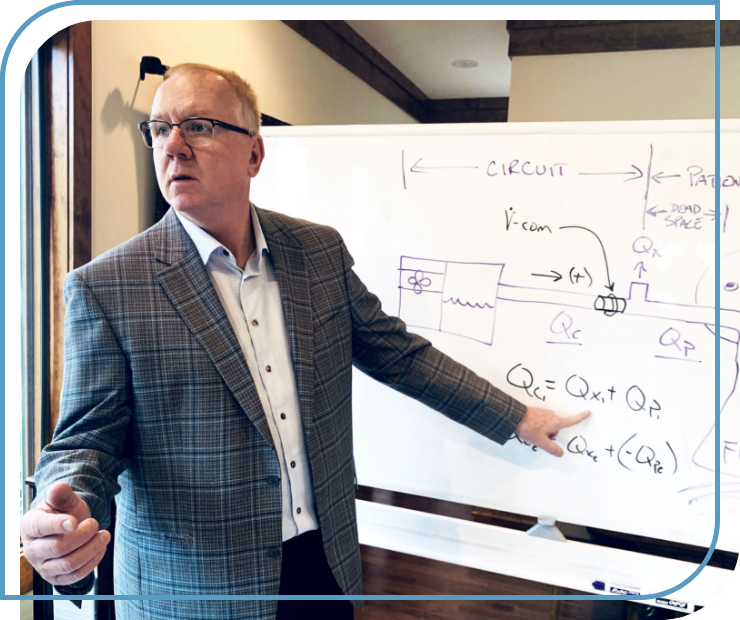The V-ComTM Story

Dr. William H. Noah, MD
William H. Noah, MD, presents the mathematical model behind the V-ComTM, which he says provides a non-compensated resistance (that takes advantage of the parabolic nature of turbulent flow) to decrease inspiratory pressure for comfort while maintaining expiratory pressure for therapy.
V-ComTM was designed and engineered to make proven CPAP treatments more palatable for both new and existing patients who have been diagnosed with sleep apnea.
Sleep treatments work, but studies have shown that less than 50% of patients prescribed CPAP & APAP are adherent to the therapy after 2 years.
Sleep Specialist Dr. William Noah was determined to change that.
Traditionally when a patient struggles with the constant flow of air pressure, the patient’s pressure settings are reduced.
Reducing pressure settings to increase a patient’s initial tolerance improves comfort, but at a cost.
Decreasing pressure settings also means decreasing expiratory positive airway pressure (EPAP) which is principally responsible for therapy.
Dr. Noah set out to engineer a device that had little effect on therapy, but increased comfort resulting in higher adherence.
Noah, medical director of Sleep Centers of Middle Tennessee PLLC and CEO of SleepRes, started conducting his own research on CPAP pressures while holed up in his basement sleep research lab during the pandemic. After researching how the original CPAP designs worked primarily with expiratory pressure instead of inspiratory pressure, he got to work developing a prototype accessory he could use on his own CPAP to make it more comfortable to use.
Hence V-ComTM was born.

V-ComTM provides comfort without compromising therapy. V-ComTM attenuates or softens the peak inspiratory flow that is often troublesome to new CPAP patients (and noninvasive ventilation patients). The highest flow rates generated by the PAP device occur during inspiration when the device generates both the exhaust flow and the patient flow (for tidal volume). Flow in a PAP circuit is turbulent, not laminar, and pressure changes by the square of the flow rate. Therefore, V-ComTM has its maximum comforting effect during the high inspiratory flows.
During expiration, flow from the PAP device is the lowest during the respiratory cycle. Since the V-ComTM effect is flow-dependent, V-ComTM has minimal effect on expiratory positive airway pressure (EPAP), which is principally responsible for therapy. Expiratory upper airway resistance increases and end-expiratory pharyngeal cross-sectional area decreases in the breaths preceding a hypopnea or apnea resulting in inspiratory pharyngeal instability. EPAP overcomes this phenomenon and maintains pharyngeal patency directly from “splinting” of the airway and indirectly from the increased functional residual capacity. By maintaining EPAP, V-ComTM maintains therapy while providing comfort.
Ready to get started?
Optimize and improve your sleep apnea treatment with V-ComTM, no prescription required!
30 Day Money-Back Guarantee
